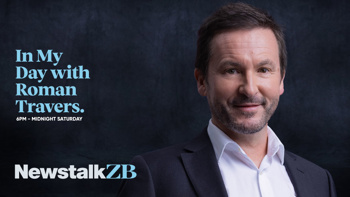Debates, rallies and walkabouts got much of the attention in the election campaign. But a big part of the battle unfolded on the internet, with millions of dollars spent on all sides of the political spectrum.
In his victory speech to supporters on election night, incoming Prime Minister Christopher Luxon reserved special thanks for one part of his campaign team.
“They left … no social media meme unposted and no Tik un-Toked in an effort to reach as many Kiwis as possible with National’s message,” he said.
Reaching people has shifted beyond television advertising and billboards. As audiences moved online, so has political advertising.
A multimillion-dollar effort
Meta, which owns Facebook and Instagram, publishes data about political advertising on its platforms. Google, the dominant search engine and owner of YouTube, does too.
An RNZ analysis examined three-months of data leading up to the election. This is part one of a two-part series explaining what we found.
Combined, National, Labour, Act, the Greens, NZ First and Te Pāti Māori spent somewhere between $1.5 million and $2.3 million on the two publishers’ platforms in that period.
TikTok does not allow paid political advertising. Posts made by parties and leaders there relied on people sharing them to reach a wider audience.
Act poured almost double the amount of cash into advertising on social networks than National or Labour spending up to $905,000.
Labour spent up to $591,000 and National up to $455,374.
Act’s bigger spend equated to more ad impressions. Its ads on Meta and Google were visible up to 98 million times - roughly twice as much as Labour’s ads.
Data from Meta and Google suggest that in the three month period before election day, each New Zealander was exposed to up to 41 party ads from the six parties that made it into Parliament. This does not include online ads on other networks, television or radio advertising, or outdoor advertising and hoardings.
The ads parties pushed hardest
During the campaign, Luxon mocked Labour leader Chris Hipkins for the party’s policy to cut GST from fruit and vegetables, saying supermarkets would soak up savings.
But Labour was very keen to spruik the policy online - it spent up to $7999 on a single advertisement on Facebook, its highest spend on a single ad during the campaign.
For National, an advertisement about crime topped the list.
Act’s biggest spend was on an ad featuring deputy leader Brooke van Velden, with up to $9999 spent.
Te Pāti Māori’s top spend was on an ad featuring Dame Naida Glavish, urging people to vote: “Nui ake tēnei ake e a koe. This is far greater than just you.”
The Green Party’s biggest spend on Facebook was for an ad aimed at renters.
The shot of NZ First leader Winston Peters “rodeo” ready astride a horse and the TikTok videos of Shane Jones singing captured media attention during the campaign. But it was another ad which the party spent the most on.
Its biggest spend on a single Facebook ad featured Peters talking to Reality Check Radio broadcaster Peter Williams. In the clip, Peters says: “If you know anyone who has done more for Māori in his time in politics than me, then please tell me who that person is.”
On Google, Act spent between $80,000 to $90,000 on a video advertisement which ran for 43 days, aimed at education. The 15-second ad mentioned raising education standards, paying “our best” teachers more and stopping the brain drain to Australia.
Labour’s top spend on Google was $30,000 to $35,000 for a text ad which appeared on Google search results, linking to the party’s website. The Greens also opted to spend the most on a text ad leading to its website, spending between $20,000 and $25,000 on a single ad which ran for 81 days. National’s biggest spend on a single ad on Google was for an ad linking to its tax calculator which touted tax relief of “up to $250 a fortnight”.
What about the leaders?
Political ads also showed up via the social media accounts of party leaders.
Luxon spent the most on Facebook ads, with an estimated upper spend of $49,119. He was followed by Act’s David Seymour on $20,152.
The co-leaders of Te Pāti Māori spent up to $4375. Unlike the other leaders, whose ads were seen mostly in Auckland, the ads from the Te Pāti Māori leaders were seen most in the Bay of Plenty and Waikato regions. These are both seats which swung from Labour to Te Pāti Māori.
Hipkins, plus Marama Davidson and James Shaw of the Greens did not run any advertisements during the three months on their Facebook pages.
Where the money comes from
Political parties receive a broadcasting allocation which can be used for television, radio and online advertising. This is partly based on votes the party received in the previous election. For 2023, Labour and National received more than $1 million each, while the Green Party and ACT received $350,000.
Parties can spend their own money during the campaign on various expenses, for 2023, this was capped at $1,388,000 per party. This is not allowed to be spent on television or radio advertising but can be spent on online advertising.
For a party with a limited broadcasting budget, such as Act at $350,000, but with plenty of donation money, spending it online is a way to reach people without breaking the election rules. Act has raised more than $4.5m in donations since the start of 2021. The Green Party raised approximately $1.4m in the same time period.
-Farah Hancock, RNZ
Take your Radio, Podcasts and Music with you









